Crafting Your Media Cover Letter
A well-crafted media cover letter is your first step toward landing your dream job in the competitive world of media. This guide provides a comprehensive approach, offering insights and actionable advice to help you create a cover letter that stands out. From understanding industry nuances to showcasing your skills, learn how to make a lasting impression. The media landscape is constantly evolving, and a strong cover letter is your opportunity to demonstrate adaptability and enthusiasm for the field. By following these guidelines, you’ll be well-equipped to present yourself as a compelling candidate.
Understanding the Media Industry’s Needs
Before you start writing, it’s crucial to grasp the media industry’s expectations. Media companies seek candidates who are not only skilled but also understand the specific challenges and opportunities within their niche. Research the target company’s values, content, and audience. Demonstrate your understanding of their mission and how your skills align with their goals. Show your awareness of current trends, ethical considerations, and the importance of accuracy and creativity. This understanding will shape your approach and allow you to tailor your cover letter to resonate with the hiring manager. Showcasing your understanding of the media landscape is essential; it will make you more attractive to employers.
Researching the Target Media Outlet
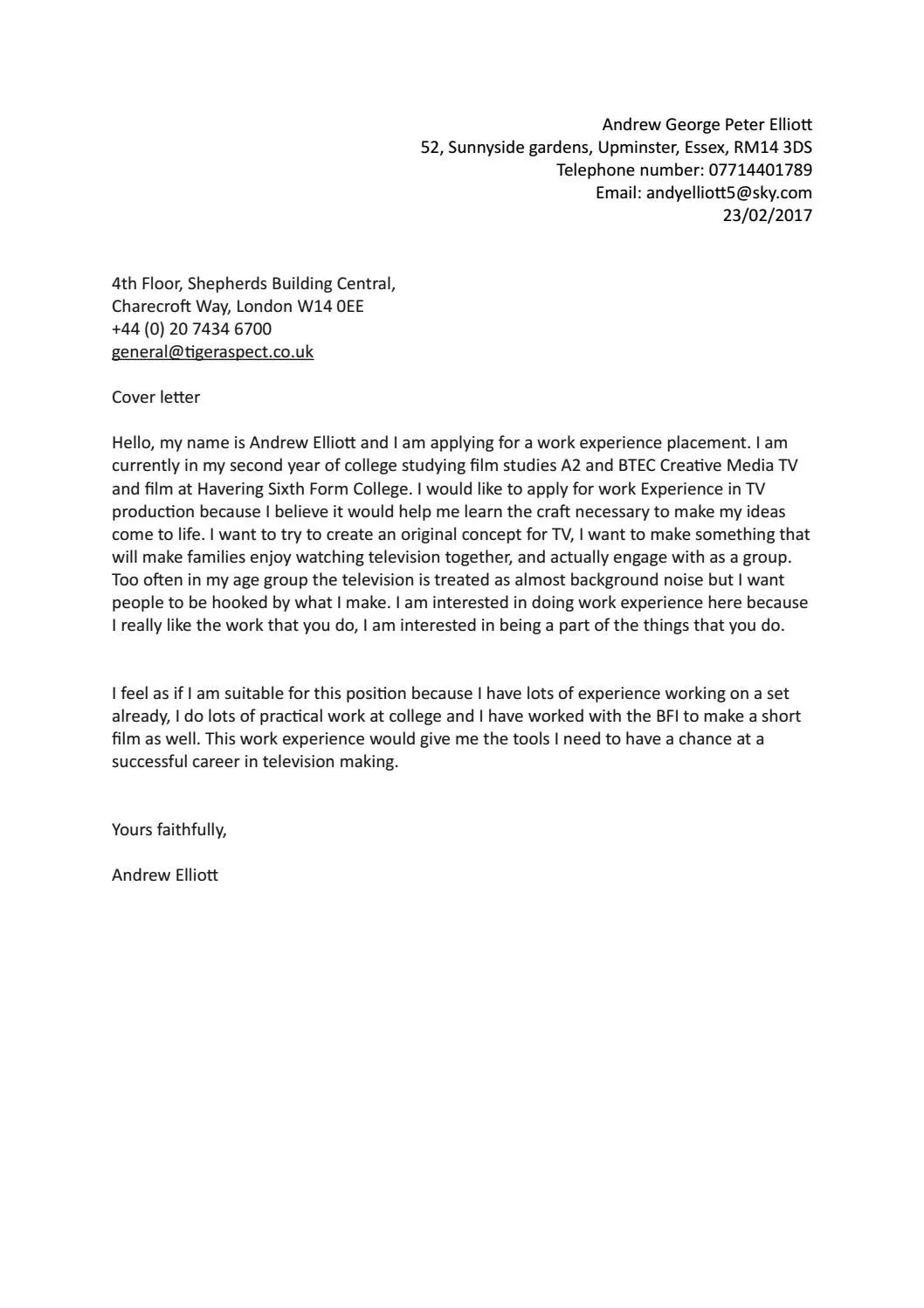
Thorough research is the foundation of a successful cover letter. Visit the company’s website, read their content, and follow their social media channels. Identify the specific needs of the media outlet and how your skills can fulfill them. Tailor your language to reflect their tone and style. Analyze their recent projects and initiatives. This research helps you personalize your cover letter and demonstrate genuine interest. Addressing the hiring manager by name, if possible, adds a personal touch and showcases the effort you have invested. It also shows that you are serious about the opportunity and invested in the role you are applying for. (Image: media-outlet-research.webp)
Highlighting Relevant Skills and Experience
Your cover letter should serve as a spotlight for your most relevant skills and experience. Media roles often require a blend of technical skills, creativity, and communication expertise. Focus on skills mentioned in the job description, providing concrete examples of your achievements. Don’t just list your skills; demonstrate them through your accomplishments. Quantify your achievements whenever possible, using numbers and data to showcase the impact you’ve made in previous roles. This could include increased audience engagement, successful campaign results, or improved content performance. This will help you to separate yourself from the crowd and show the value you bring to the role.
Identifying Key Skills for Media Roles
Identify the key skills that media companies seek. These vary depending on the role but commonly include writing proficiency, video editing skills, social media management, data analysis, and project management. Prioritize these skills and provide supporting examples from your background to show that you meet them. Adaptability, teamwork, and the ability to meet deadlines are also crucial. Highlight experience with relevant software and tools.
Showcasing Accomplishments with Numbers
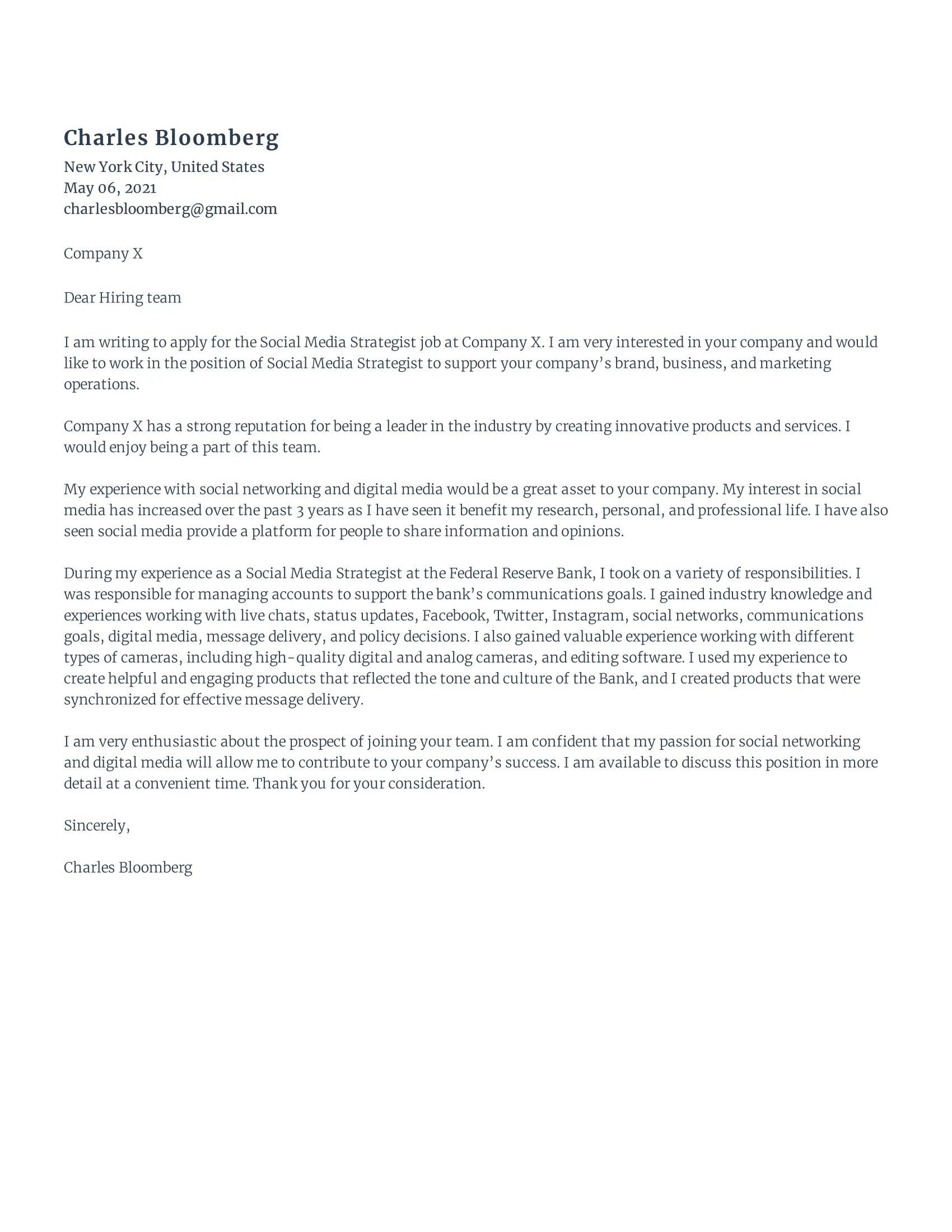
Numbers and data bring your accomplishments to life. Instead of saying “I managed social media campaigns,” state “Increased social media engagement by 30% in six months.” Quantifiable results show the impact you had. Use metrics to illustrate the effectiveness of your work. Include examples such as website traffic, follower growth, or campaign ROI. Numbers make your claims more credible and persuasive. Show, don’t just tell; use data to provide clarity.
Structuring Your Media Cover Letter
A well-structured cover letter is easy to read and leaves a positive impression. The format of your letter plays an important role in capturing and holding the reader’s attention. It should flow logically, with each section building on the previous one. Employ clear headings and concise paragraphs. Use a professional font and maintain a consistent style throughout. This structured approach ensures that your letter is readable and easy to understand.
Formatting and Layout Essentials
Use a professional font such as Arial or Times New Roman. Use one-inch margins. Keep paragraphs concise, and use bullet points to highlight key information. Ensure there is sufficient white space to make your cover letter visually appealing. Proofread for any formatting errors before submitting. Formatting shows attention to detail and professionalism.
Writing a Compelling Opening Paragraph
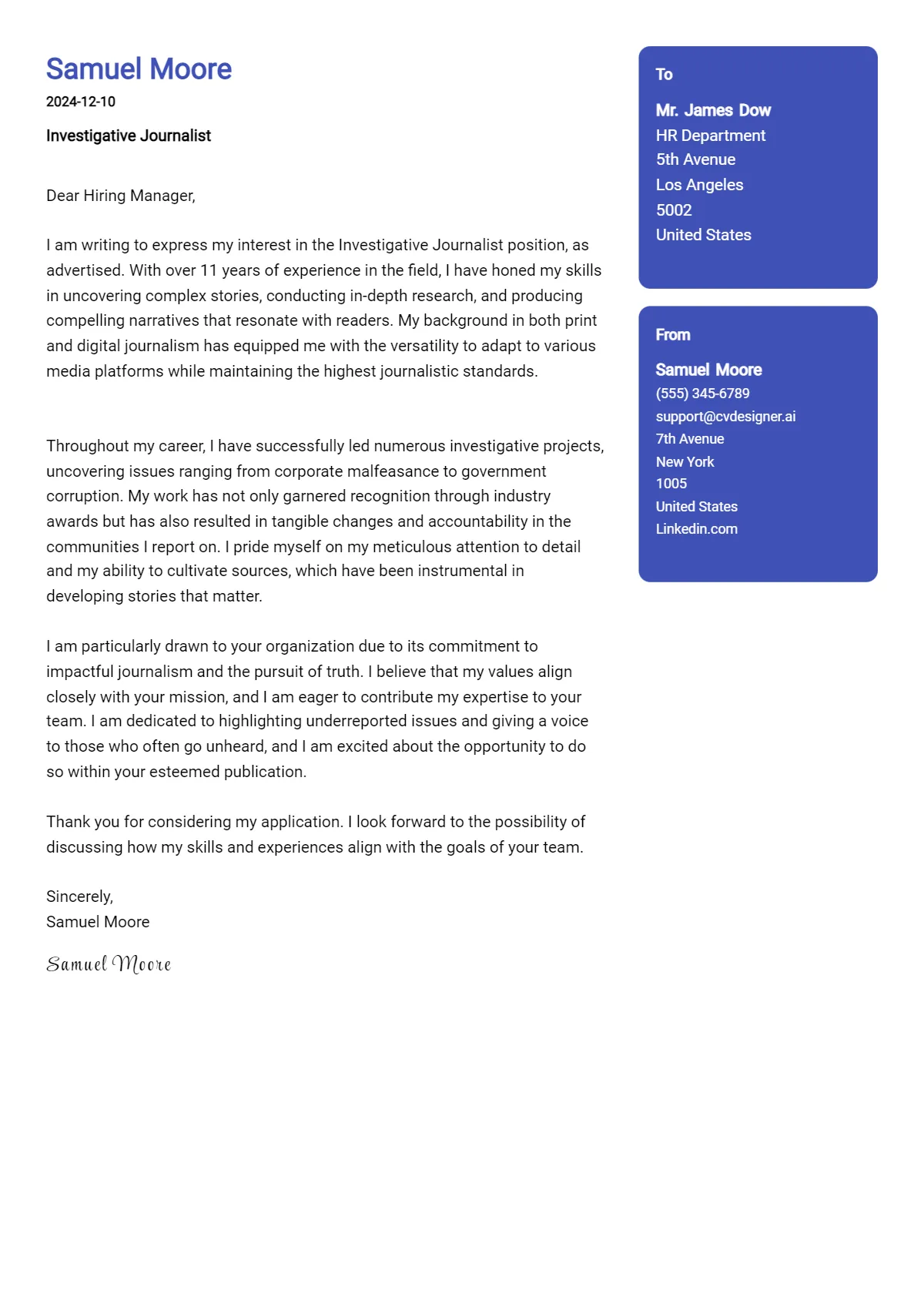
Your opening paragraph sets the tone for your cover letter and should immediately grab the reader’s attention. State the specific position you are applying for and how you learned about the opportunity. Express your enthusiasm for the role and the company. Briefly highlight your most relevant qualifications and mention something specific that caught your attention, showing that you have researched the organization. This first impression is crucial.
Developing the Body Paragraphs
The body paragraphs are the meat of your cover letter, where you elaborate on your skills, experience, and achievements. Focus on a few key points that directly relate to the job requirements. Use the STAR method (Situation, Task, Action, Result) to describe your experiences and provide concrete examples of your successes. Demonstrate how your skills and experiences align with the needs of the media outlet. Be sure to show and not just tell.
Concluding with a Strong Call to Action
Your concluding paragraph should reiterate your interest in the position and summarize why you are a good fit. Express your enthusiasm and reiterate your desire for an interview. Thank the hiring manager for their time and consideration. Provide your contact information and invite them to reach out to you. Conclude by expressing your eagerness to discuss your qualifications further.
Proofreading and Editing Your Cover Letter
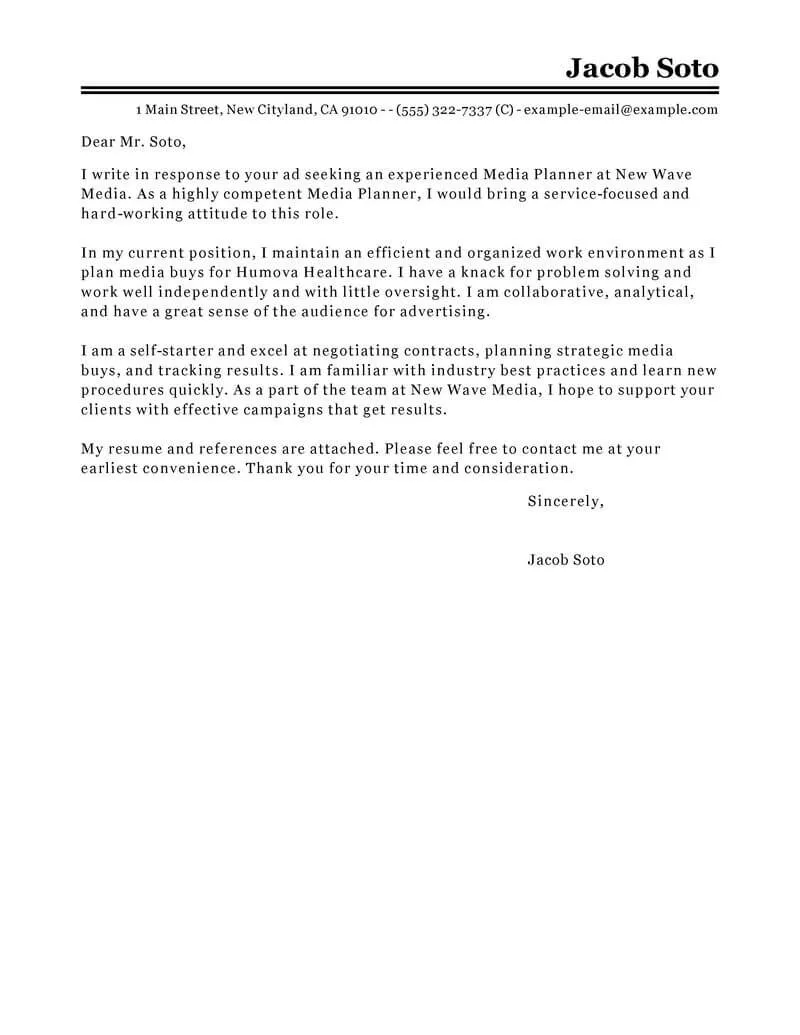
Proofreading is a critical step. Mistakes can undermine your credibility. Read your cover letter multiple times, looking for grammatical errors, spelling mistakes, and awkward phrasing. Use grammar-checking software and ask a friend or colleague to review your letter. Attention to detail is essential in the media industry, and a polished cover letter demonstrates professionalism.
Common Mistakes to Avoid
Avoid common cover letter mistakes to increase your chances of success. Generic cover letters that are not tailored to the job or company are a red flag. Do not use jargon, slang, or overly casual language. Do not be overly formal or stiff. Avoid exaggerating your skills or experience and never include negative comments about previous employers. Always use positive and enthusiastic language. Avoid making any grammatical or spelling errors.
Using Action Verbs Effectively
Action verbs make your cover letter more dynamic and impactful. Use verbs like “managed,” “created,” “implemented,” “led,” and “achieved” to describe your accomplishments. Start each bullet point or sentence with an action verb. This approach helps to highlight your skills and showcase your achievements in a way that is engaging and compelling. Effective use of action verbs will make your cover letter more impactful and will help you to catch the attention of the reader. (Image: action-verbs-media.webp)
Tailoring Your Cover Letter for Each Application
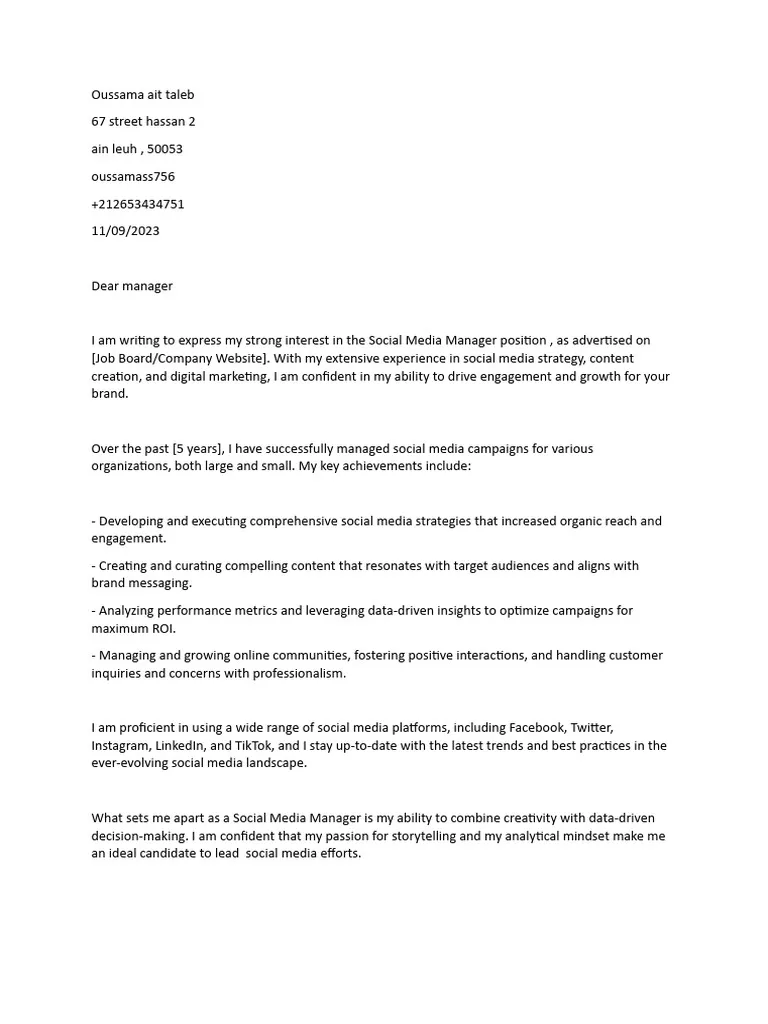
Customize your cover letter for each application. Generic cover letters do not make a strong impression. Tailor each letter to the specific job and company. Modify the language, highlight the skills, and include examples that are relevant to the specific requirements of the role. This tailored approach shows that you have taken the time to understand the needs of the company and that you are sincerely interested in the position. This will show a genuine interest, which the hiring manager will find very attractive.
Seeking Feedback and Revision
Seek feedback from trusted sources to improve your cover letter. Ask friends, mentors, or career counselors to review your cover letter for clarity, grammar, and overall effectiveness. Be open to constructive criticism and make revisions based on the feedback received. A fresh perspective can help you catch errors or improve your writing. It can also assist in making it more attractive to the hiring manager, thus increasing your chances of landing the role.
Example Cover Letters for Different Media Roles
Media roles vary greatly, and your cover letter should reflect this. Consider different examples to guide your own writing. Tailor each letter to the specific role, and include the relevant keywords and requirements of the job. Always make sure your cover letter is tailored for the role you are applying to. Adapt your letter to mirror your goals.
Cover Letter for a Journalist Position
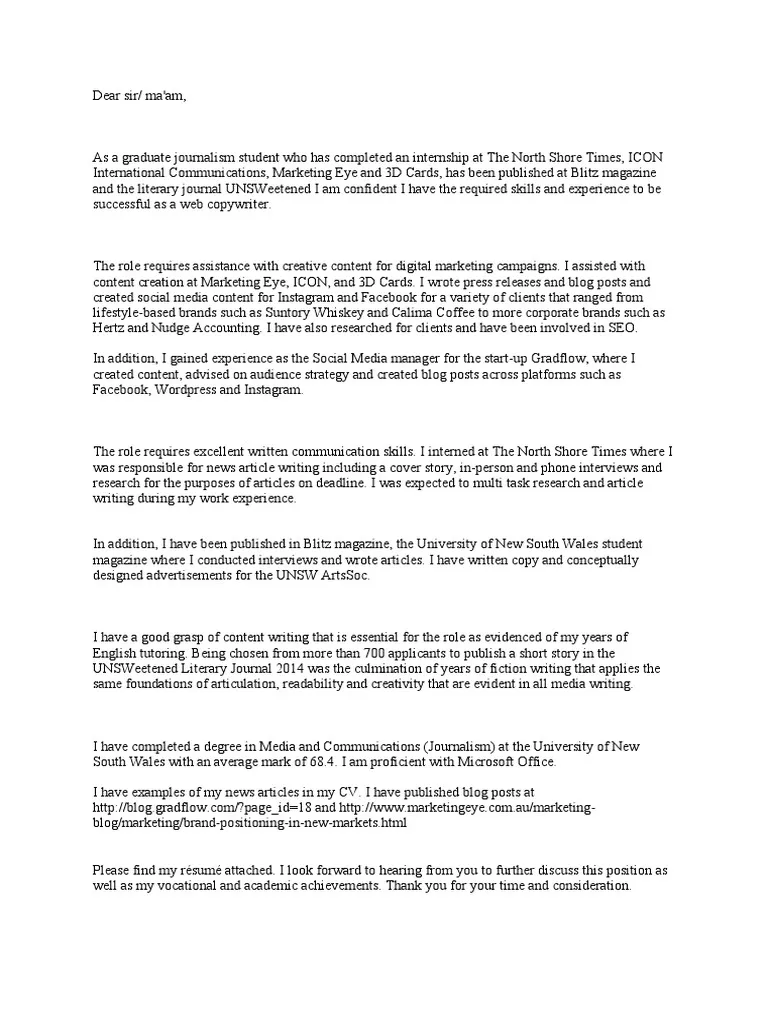
Journalists need to demonstrate strong writing, research, and interviewing skills. Your cover letter should highlight your ability to write compelling stories, conduct thorough research, and meet deadlines. Include examples of published work, links to your portfolio, and any experience with specific media outlets or topics. It’s also vital to showcase your understanding of journalism ethics and standards. Include a link to your portfolio of works. (Image: journalist-cover-letter.webp)
Cover Letter for a Public Relations Role
Public relations professionals need to demonstrate strong communication, relationship-building, and strategic thinking skills. In your cover letter, emphasize your experience creating and executing PR campaigns, building media relationships, and managing crisis communications. Include any successes you have had in increasing brand awareness or managing reputation. Highlight the ability to work under pressure and maintain positive relationships with a wide array of stakeholders.
Cover Letter for a Social Media Manager
A social media manager needs to showcase their expertise in social media strategy, content creation, and data analysis. Your cover letter should showcase your ability to build an engaged audience, create compelling content, and analyze social media metrics. Include examples of successful social media campaigns, audience growth, and engagement rates. Be sure to show the potential employer your capabilities with social media trends and algorithms.
Cover Letter for a Video Editor
Video editors should emphasize their technical skills, creativity, and experience with video editing software. Your cover letter should highlight your ability to create engaging and professional videos, manage projects, and meet deadlines. Include examples of your video editing work, links to your portfolio, and any experience with specific video formats or platforms. Showcase your technical skills with the necessary software.
Finalizing Your Cover Letter and Submitting
Before submitting, ensure your cover letter is free of errors. Review your letter one last time for formatting, grammar, and spelling. Send your cover letter in PDF format. If the job posting requests a specific format, follow the instructions. Include your resume and any additional documents as required. Ensure your contact information is up to date and accurate. By following these steps, your media cover letter will be a strong tool for your job search. (Image: media-cover-letter-writing.webp)
